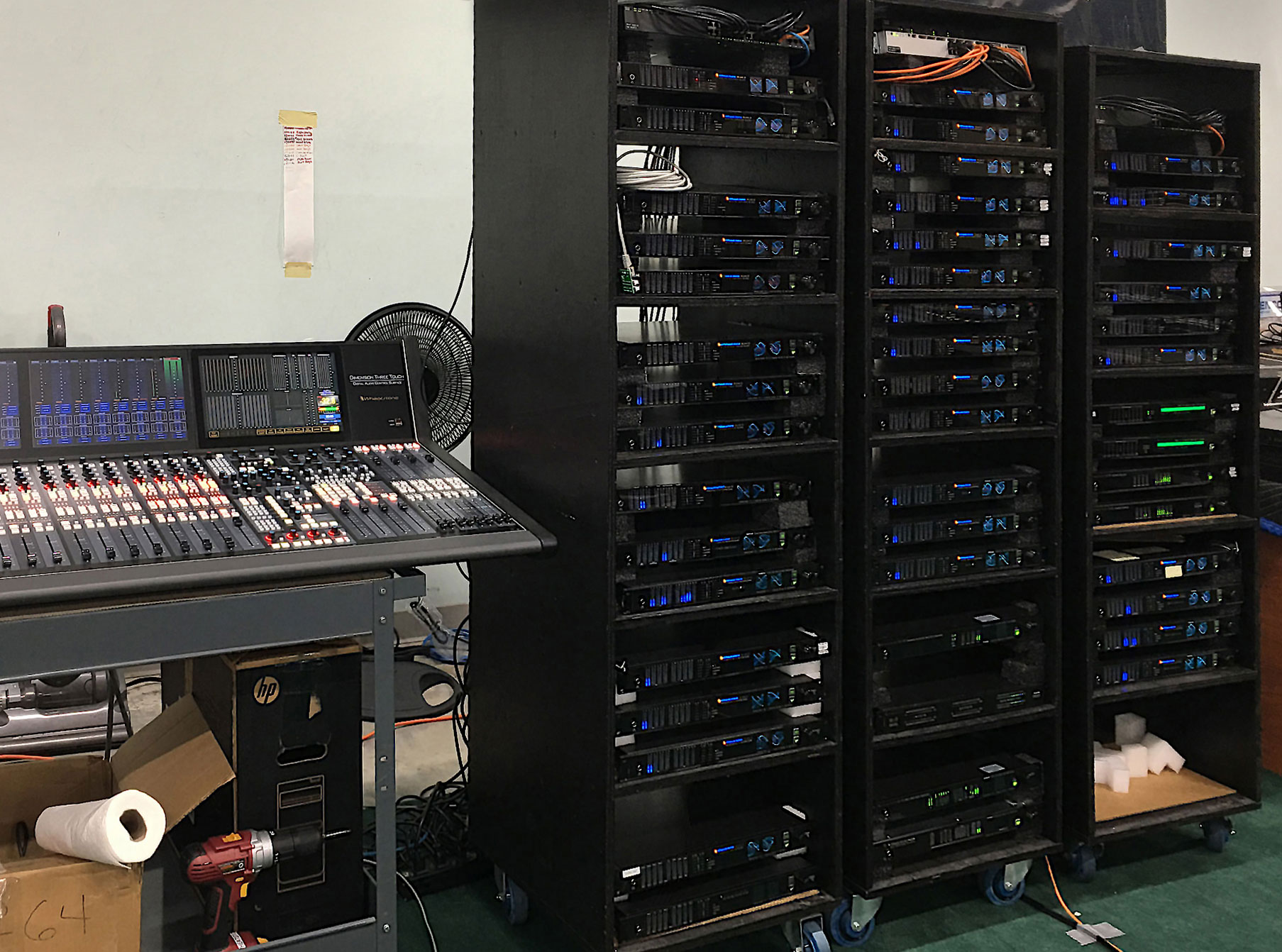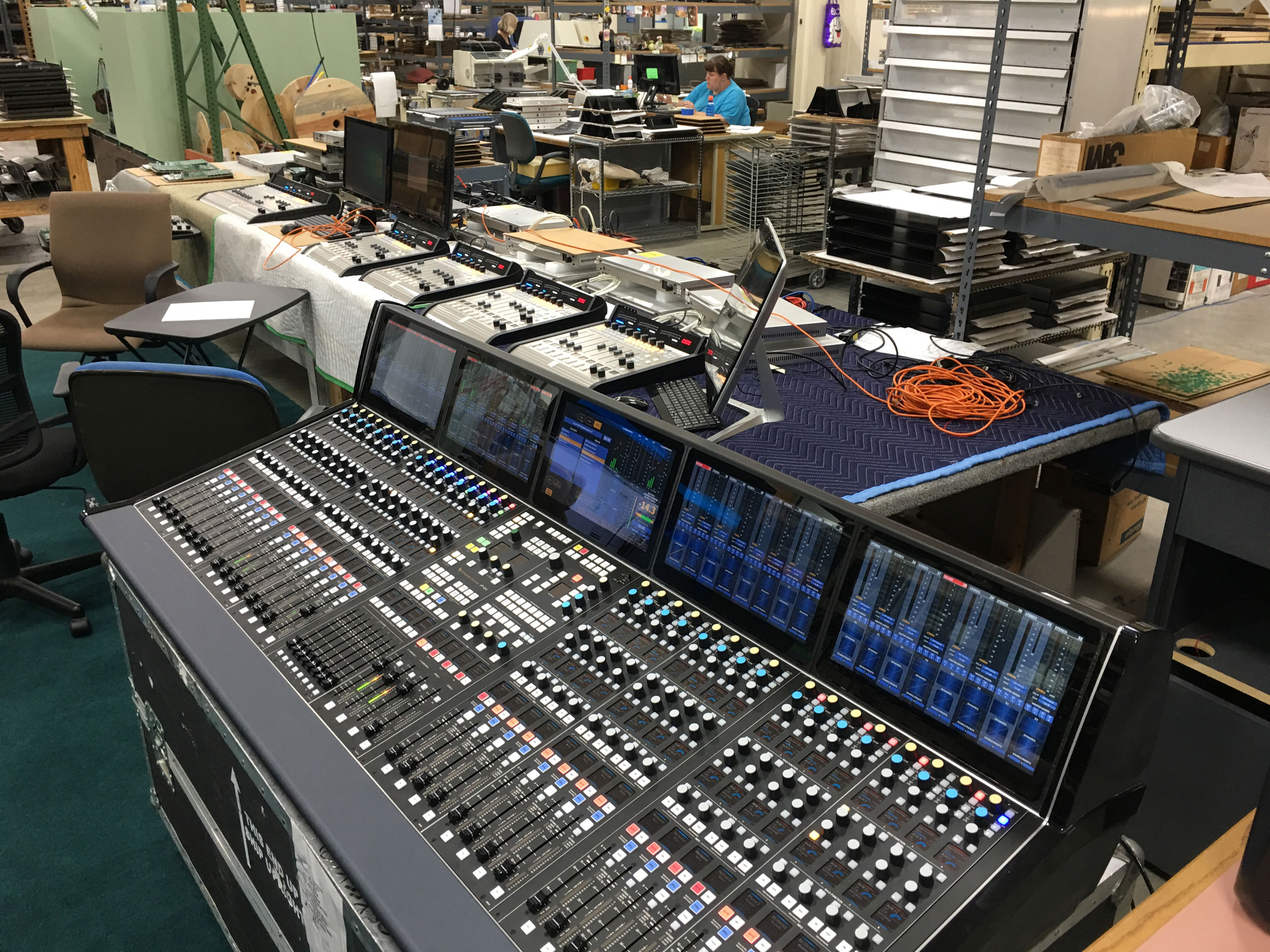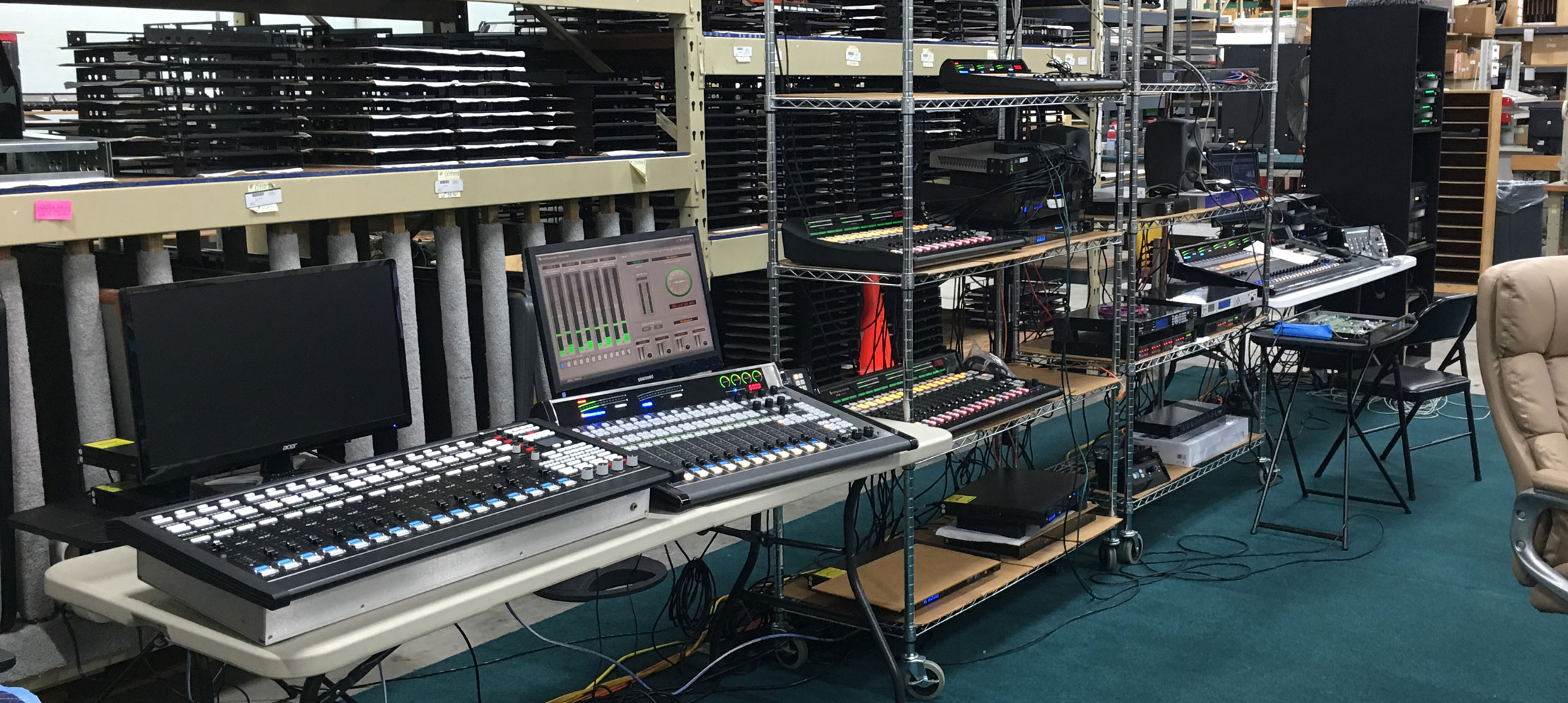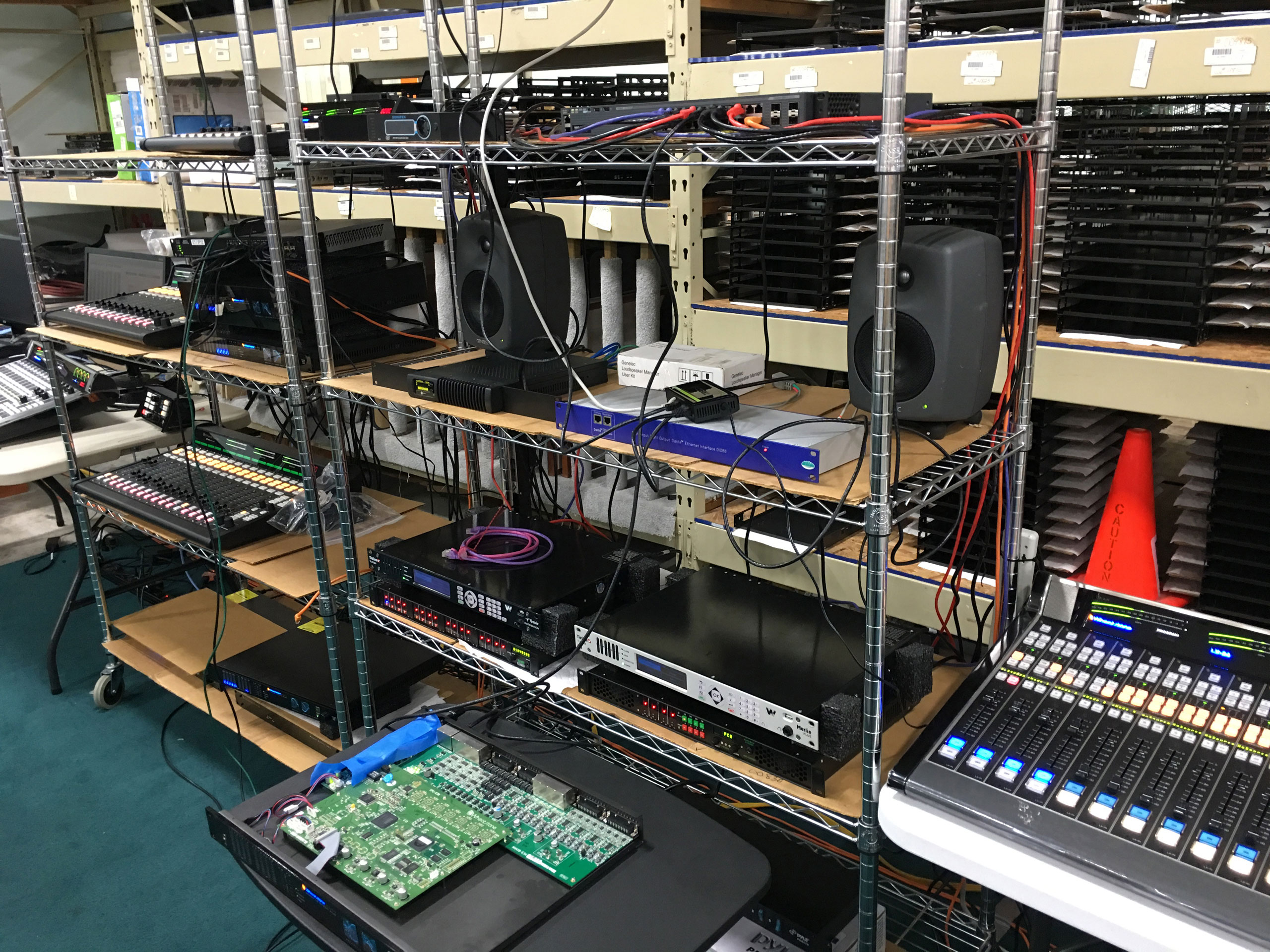WHEAT:NEWS TV JUNE 2018 Volume 5, Number 6
Chances are you have a plant intercom. It probably works great and you can’t imagine doing without it. But what if you needed two people to be able to talk outside the system, and you don’t want to spring for two more key panels that will get only occasional use? Your IP audio network might be able to form the communication backbone for a temporary or basic intercom system.
All you’ll need is an existing AoIP network that has integrated audio and control, like WheatNet-IP, and a simple microphone, mic preamp, and amplified speakers at each location. A voice-over booth is a good place to start, but, of course, you’ll find mics, preamps and speakers conveniently located in other studios, too.
In the case of our WheatNet-IP audio network, simply connect the mics on each end to the inputs on the nearest WheatNet-IP BLADE (our I/O units that make up the network) and connect the speakers to the outputs of the BLADE.
Next, you’ll need a push-to-talk button or control at each location. Talkback can be found in talent stations, button panels and mixers already networked into the WheatNet-IP environment (you can also build your own virtual interface with talkback using your Windows® Tablet and our ScreenBuilder application). These can be tied to logic input (LIO) on a BLADE. With a quick crosspoint change using the WheatNet-IP audio network NAVIGATOR software, you can program each TALK button to route to the microphone to the other location’s speaker for as long as it’s held down. Note, the only wiring you’ve had to do is to the BLADE at each end. Beyond that, no matter how far apart those two locations are, the network does all the work of getting the signal from here to there.
If you’re feeling ambitious, you can add more sophistication to your WheatNet-IP networked intercom. If one location has a talent microphone that might be open, you can tell the system to keep that intercom speaker muted anytime the mic is on. You can build a multi-station intercom using WheatNet-IP button panels so you can implement signaling, dial-up station selection, key listen, and talk select functions, not unlike those of your plant intercom. Thanks to the utility mixers built into WheatNet-IP BLADES, you can even make it possible to listen to more than one key simultaneously. Most people don’t think of an AoIP network as a communications system, but this is just one of the many functions you can implement when your network has audio and control integrated into a single AoIP backbone.
Would any sensible broadcast engineer put his/her system through dozens of consecutive reboots? Would she/he ever send audio on a purposefully Rube Goldberg-ish route? Would they use new, unproven switches? That’d be asking for trouble, right?
But we did. As we prepared to roll out a major revision of our BLADE software, we put together a huge WheatNet-IP system: 12 radio and TV consoles, 62 hardware BLADEs, 100 software BLADEs, talent stations, SideBoards, Smart Switch panels, and software including three different vendors’ automation systems. Then we added in AES67 devices from Genelec, Ward-Beck, Dante, and Axia. All of this was tied together by new models of Cisco and Dell switches.
Then we routed audio from one device to the next until our signal path passed in a HUGE daisy chain through every single piece of gear. Just cabling and configuring the system took days! Then, with our engineers monitoring closely, we ran the system through a series of automated torture tests that included completely rebooting the system and verifying proper operation afterward. We’re proud to say that after more than 160 reboots, not a single connection failure or loss of audio occurred.
We did all this so you won’t have to. When you take that inevitable catastrophic power hit, you can be confident that your WheatNet-IP system will come back up healthy and ready to pick up where it left off.
Experience WheatNet-IP Live at Broadcast Asia

Stop by stand 4P1-05 at Broadcast Asia, June 26 – 28, in Singapore, to get the full WheatNet-IP audio network experience. WheatNet-IP is an AES67 compatible ecosystem of IP routing, control, mixing and virtual development tools. Ask us about how one box can replace an anvil case of equipment for moving and controlling audio in a sports venue, about developing your own virtual environment using ScreenBuilder tools, and about the Mother of All IP Boards (IP-64).
Experience why Wheatstone consoles, networking and processing are in major broadcast studios around the world.
Look for Wheatstone at the Suntec Singapore stand 4P1-05.

Q: Why is integrated control and routing so important in an IP audio network? I thought AoIP was all about routing?
A: Routing is important, yes, but you also need to be able to control the audio being routed. Our approach is to closely integrate control and routing so that audio can be routed along with all the logic functions used to control it or its related devices. Control built into each WheatNet-IP connection point is shared with all other IP connection points across the network, giving you access to not only all source signals, but also the presets and any associated logic that goes along with each feed for controlling such things as mic ON/OFF, or changing remote mic settings for IFB, processing and other parameters. Being able to route audio in tandem with control makes it possible to quickly repurpose a studio, for example, and it’s why WheatNet-IP can be used as the communications backbone for a basic intercom system.
FREE EBOOK: IP AUDIO FOR TV PRODUCTION AND BEYOND
Putting together a new studio? Updating an existing studio?
We've put together this IP Audio for TV Production and Beyond ebook with fresh info and some of the articles that we've authored for our website, white papers, and news that dives into some of the cool stuff you can do with a modern AoIP network like Wheatstone's WheatNet-IP. And it's FREE to download!
VoxPro at the SVG College Summit
Wheatstone attended the SVG College Summit at the beginning of June and met a lot of new broadcasters as well as touched base with familiar faces. We also held a drawing for VoxPro7, our live record/edit/playback software.
Congratulations to our three winners: David Spence of Georgia State University, Scott Guthrie of University of Nebraska, and Juan Reyes of Kennesaw State, who all came away from the summit as winners of our latest VoxPro recorder/editor software.
VoxPro is being used by the NBA Portland Trail Blazers and other sportscasters for live recording and editing during sporting events.
We prepped a video on how to use VoxPro to edit a live recording in real time and excerpt a bit of audio for a promo without interrupting the recording. Below is that video.
Got feedback or questions? Click my name below to send us an e-mail. You can also use the links at the top or bottom of the page to follow us on popular social networking sites and the tabs will take you to our most often visited pages.








